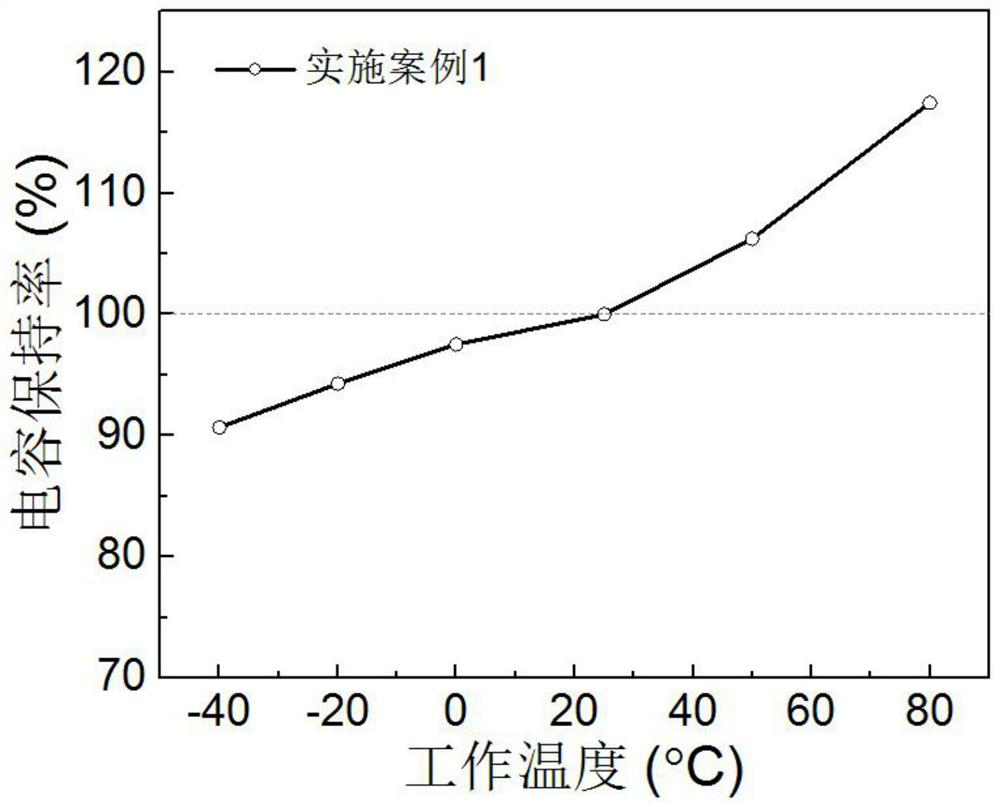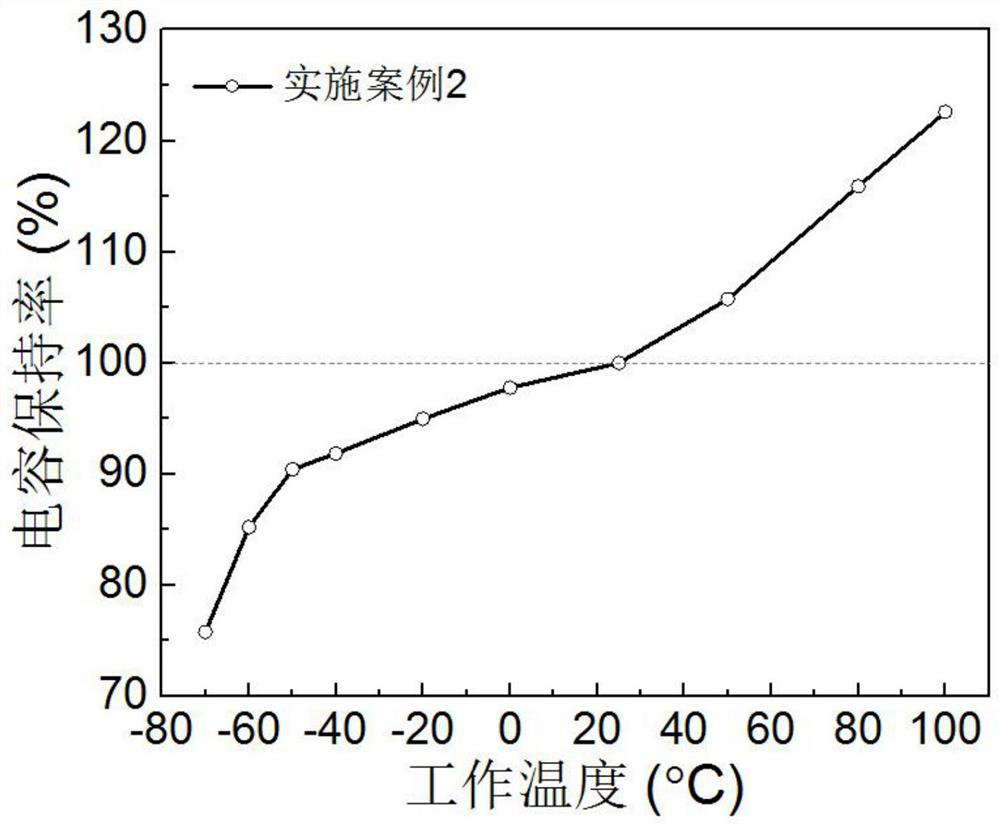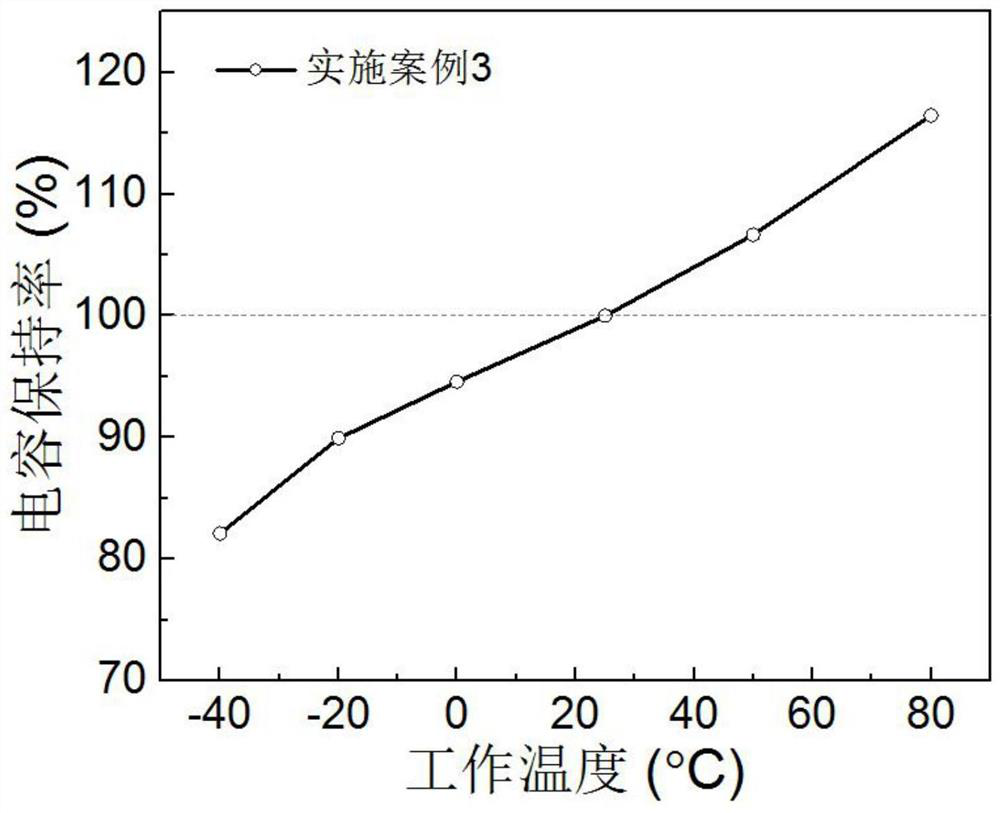Supermolecule-based aqueous alkaline electrolyte with ultra-wide working temperature range and application thereof
An ultra-wide working temperature, electrolyte technology, applied in the field of electrochemical energy storage, can solve the problems of limited application, damage, large difference in rate performance, etc., and achieve the effects of simple preparation and storage conditions, easy implementation, and simple composition of components
- Summary
- Abstract
- Description
- Claims
- Application Information
AI Technical Summary
Problems solved by technology
Method used
Image
Examples
Embodiment 1
[0024] Example 1: Prepare the electrolyte and match it with activated carbon as the electrode material to assemble a symmetrical supercapacitor. Wherein, the solute of the electrolyte is 6 mol / L potassium hydroxide, and the solvent is a supramolecular solvent constructed of deionized water and dimethyl sulfoxide with a molar ratio of 10:1. The working voltage of the device is 0~1V, and it has a very wide working temperature range, and, under the conditions of charging voltage window of 0.8V and charging and discharging current density of 1A / g, it has a relatively stable temperature in the working temperature range. Capacitance retention rate, among them, the capacitance retention rate (relative to 25°C) in the temperature range of -40°C to 80°C is as follows: figure 1 As shown, it can be seen that the capacitance change rate in the temperature range of -40°C to 50°C is less than 10%.
Embodiment 2
[0025] Example 2: Prepare the electrolyte, match with activated carbon as the electrode material, and assemble the symmetrical supercapacitor. Wherein, the solute of the electrolyte is a mixture of 4.5 mol / L sodium hydroxide and potassium hydroxide, and the solvent is a supramolecular solvent constructed of deionized water and dimethyl sulfoxide with a molar ratio of 7:1. The working voltage of the device is 0~1V, and it has a very wide working temperature range, and, under the conditions of charging voltage window of 0.8V and charging and discharging current density of 1A / g, it has a relatively stable temperature in the working temperature range. Capacitance retention rate, among them, the capacitance retention rate (relative to 25°C) in the temperature range of -70°C to 100°C is as follows: figure 2 As shown, it can be seen that the capacitance change rate in the temperature range of -50°C to 50°C is less than 10%.
Embodiment 3
[0026] Example 3: Prepare the electrolyte, match with activated carbon as the electrode material, and assemble the symmetrical supercapacitor. Wherein, the solute of the electrolyte is potassium hydroxide of 1.5 mol / L, and the solvent is a supramolecular solvent constructed of deionized water and dimethyl sulfoxide with a molar ratio of 3:1. The working voltage of the device is 0~1V, and it has a very wide working temperature range, and, under the conditions of charging voltage window of 0.8V and charging and discharging current density of 1A / g, it has a relatively stable temperature in the working temperature range. Capacitance retention rate, among them, the capacitance retention rate (relative to 25°C) in the temperature range of -40°C to 80°C is as follows: image 3 As shown, it can be seen that the capacitance change rate in the temperature range of -20°C to 50°C is less than 10%.
PUM
 Login to View More
Login to View More Abstract
Description
Claims
Application Information
 Login to View More
Login to View More - R&D
- Intellectual Property
- Life Sciences
- Materials
- Tech Scout
- Unparalleled Data Quality
- Higher Quality Content
- 60% Fewer Hallucinations
Browse by: Latest US Patents, China's latest patents, Technical Efficacy Thesaurus, Application Domain, Technology Topic, Popular Technical Reports.
© 2025 PatSnap. All rights reserved.Legal|Privacy policy|Modern Slavery Act Transparency Statement|Sitemap|About US| Contact US: help@patsnap.com



